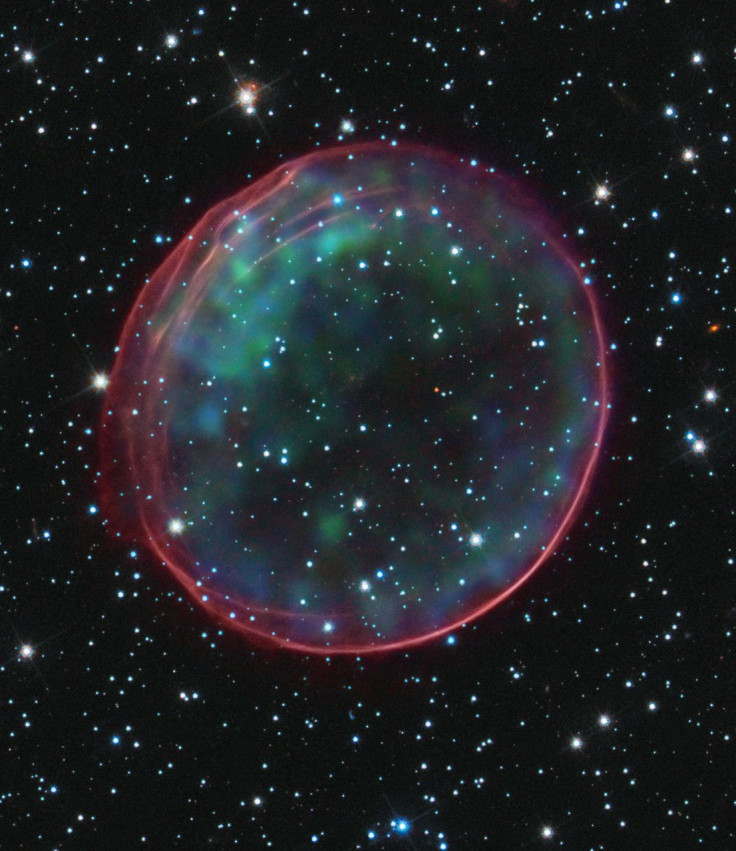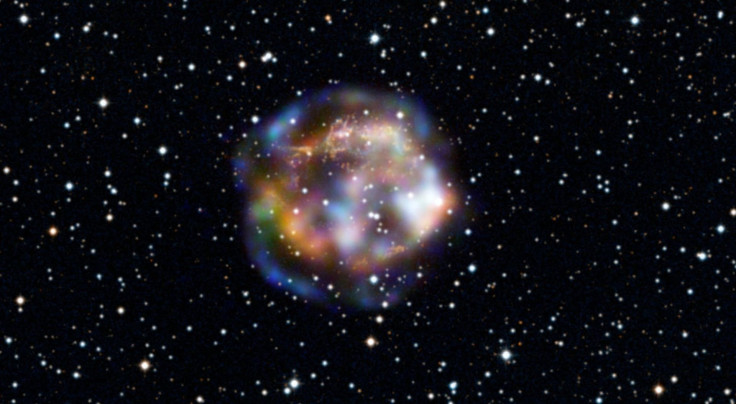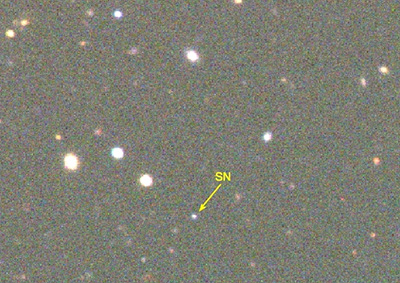Superluminous ‘Heavy Metal’ Supernova 420 Million Light-Years Away Likely Powered By Magnetar

Thousands of supernovae have been detected by humankind, making these explosions of collapsing stars almost commonplace in the universe. However, there is a subset of particularly powerful supernovae, called superluminous supernova, that is rare and far more energetic than its regular counterpart.
About 50 superluminous supernovae have been identified so far among the thousands of supernovae detected, but astronomers have now observed one that is unusual even for its kind. Called SN 2017egm, the event took place at a distance of only 420 million light-years from Earth, which is about three times closer than any other superluminous supernova ever observed. Even more remarkably, the explosion took place in a large spiral galaxy which has a relatively high presence of heavier elements.
Read: Superluminous Supernova Explosion 10 Billion Light-Years Away Outshines Milky Way By Factor Of 3
Typically, collapsing massive stars go supernova (they don’t always go supernova) after they run out of fuel. What causes a superluminous supernova, however, scientists have very little idea about, including the kind of star involved or the physical processes that lead up to it.

One of the factors thought to be necessary for superluminous supernovae was that they occur in dwarf or other small-sized galaxies. The low-metal environment (astronomers refer to all elements after hydrogen and helium as metals) of such galaxies was thought to be related to the occurrence of these events, which are 10 to 100 times brighter than ordinary supernovae. Almost all previous recordings of superluminous supernovae have been in low-metal galaxies.
But SN 2017egm, spotted May 23 using the European Space Agency’s Gaia satellite, is an exception, marking it the first time astronomers had clear evidence of this rare stellar phenomenon taking place in a metal-rich environment of galaxy NGC 3191.
“Superluminous supernovas were already the rock stars of the supernova world. We now know that some of them like heavy metal, so to speak, and explode in galaxies like our own Milky Way,” Matt Nicholl from the Harvard-Smithsonian Center for Astrophysics (CfA) in Cambridge, Massachusetts and lead author of a new study on SN 2017egm, said in a statement Monday.
Another superluminous supernova had been observed in a regular-looking galaxy recently, but that stellar explosion, which was over three times brighter than all the stars in the Milky Way taken together, took place about 10 billion light-years away from Earth.

The team of researchers also found evidence to support the theory of a magnetar — a fast-spinning, highly magnetized neutron star — being responsible for the large amount of light generated in a superluminous supernova explosion. Even an ordinary supernova can temporarily outshine the galaxy it resides in.
In the case of SN 2017egm, the amount of mass ejected by the explosion is perhaps less than other events of its kind, despite its brightness and the properties of the magnetar behind it being similar to other events of its kind. That could mean the star that collapsed before the explosion had already lost more mass before going supernova than other stars that end up as superluminous supernovae. It could also mean that the magnetar powering it had a slower spin that other magnetars.
Read: Most Antimatter In Milky Way Created By Weak Supernova Explosions
What astronomers have learned is that the amount of metal present in the galaxy may have very little effect on whether a supernova is superluminous or not. However, only one superluminous supernova can be found in a metal-rich setting for every 10 that can be seen in low-metal galaxies. Since gamma-rays exhibit this property too, and are associated with explosions of massive stars, scientists now think the two could be closely associated.
Even though it is the closest superluminous supernova ever seen from Earth, at least in recorded history, it is still pretty far away. Any chance of seeing one of them closer home is remote.
“If one of these went off in our own Galaxy, it would be much brighter than any supernova in recorded human history and would be as bright as the full Moon,” the paper’s co-author Edo Berger, also of the CFA said in the statement. “However, they're so rare that we probably have to wait several million years to see one.”
© Copyright IBTimes 2024. All rights reserved.




















